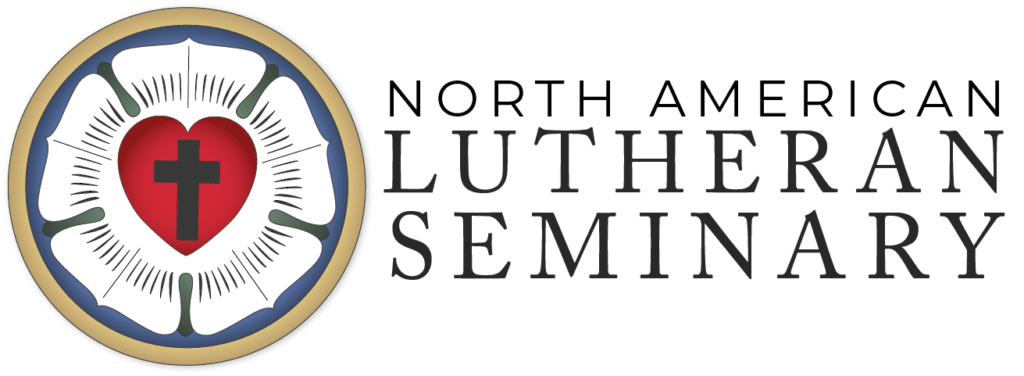The Patristic Theology of the imago Dei
Dr. Alexander H. Pierce
Assistant Professor of Historical Theology
North American Lutheran Seminary

The earliest Christian believers sought to understand humankind in light of the Scriptures of Israel and the apostolic proclamation of the gospel of Jesus Christ crucified and risen. The most fundamental biblical witness regarding what it means to be human consists in the words of Genesis 1:26–27, which ascribe to human beings the unique dignity of being made in God’s image and likeness. This basic insight forms the bedrock of patristic anthropology. Although there is by no means a “consensus of the fathers” (consensus partum) regarding the theology of the imago Dei, there was a universal recognition that humans alone bear God’s image and that being image-bearers confers a special form of dignity. This baseline affirmation was not at all so perspicuous, however, that it led to a uniform tradition of interpretation. Rather, the early Church displays a considerable diversity of interpretations that share in common the basic affirmation of humans as image-bearers.
One noteworthy feature of some patristic reflection on Genesis 1 and 2 is the conceptual distinction certain writers draw between image and likeness. Some theologians interpreted “image and likeness” to form a hendiadys, asserting one and the same quality of humankind. Others took the same two predicates, image and likeness, to comprise a distinct pair where being created in God’s image means something distinct from being made in his likeness.
Though his view is less than uniform, Irenaeus envisioned the image as pertaining to our created natures, our body and soul. On the other hand, he related humans’ likeness to God to the gift of the Spirit.1 Church Fathers like Irenaeus who distinguished “image” from “likeness” offer a helpful grammar or rubric for understanding what remains the same in human nature and life, and what changes as a consequence of sin. Irenaeus distinguishes in the fall of humanity the loss of likeness to God and the perdurance of the image. For Irenaeus, sinful human persons remain body-soul composites, but they have lost the gift of the Holy Spirit in which their likeness to God had consisted. The only way to regain the Spirit’s presence and to grow in likeness to God is to be united to Christ who is God’s perfect image and likeness.
Many early Christians follow New Testament passages such as Colossians 1:15 (“the Image of the invisible God”) and Hebrews 1:3 (“the very Image of his substance”) to insist that Christ is the true image of God. Authors such as Athanasius of Alexandria, Gregory of Nazianzus, and Augustine of Hippo therefore spoke of humans being created “according to” (κατα; secundum) or even “to” or “towards” (ad) the true image, which is Jesus Christ. The Christian life is one of union with Christ initiated in baptism where we are gradually conformed to the Word who is the perfect image of God (Romans 8:29) and whom we imitate by means of the gift of the Spirit who gives life (2 Corinthians 3:6). In short, by the work of the Spirit, Christ’s members are enabled to become like the incarnate Son who is the perfect visible likeness of the invisible Father. For early Christians, the human person’s graced participation in Christ was always a constitutive part of growing in likeness to God and, as Augustine puts it so well, Christ is both the goal and the way to it.2
As we reflect on the patristic theology of the imago Dei, it is important for us to remember that different ages of the Church’s life present alternate exegetical methods and theological sensibilities. Reflection on Genesis 1:26–27 in the early Church is often markedly different from its counterpart in the time of the Reformation just as both can be differentiated from the principal considerations of our present age. Nevertheless, although we may find early Christian writings hard to follow at times, the Church Fathers reflected upon “concepts and images, insights and reflections, that still echo deeply in our hearts as we attempt a more authentic self-understanding, and it would be a pity if they are no longer remembered.”3 As in the case of our Lutheran Confessions and the catholic tradition more generally, we must seek to go on in the same way as our predecessors but we must also believe, teach, and confess as Christ’s members called to our own time and situation.
-
Irenaeus, Against Heresies 5.6.1. However, see the following places where Irenaeus seems to treat image and likeness as synonymous predicates about human persons: Against Heresies 3.18.1; 3.23.2; 4.38.3-4; 5.1.3.
-
See e.g., Augustine, Homilies on the First Epistle of John 10.1, trans. Boniface Ramsey, Works of Saint Augustine I/14, (Hyde Park, NY: New City Press, 2008), 145.
-
Peter C. Phan, Grace and the Human Condition, Message of the Fathers of the Church, vol. 15 (Wilmington, DE: Michael Glazier, 1988), 17.

